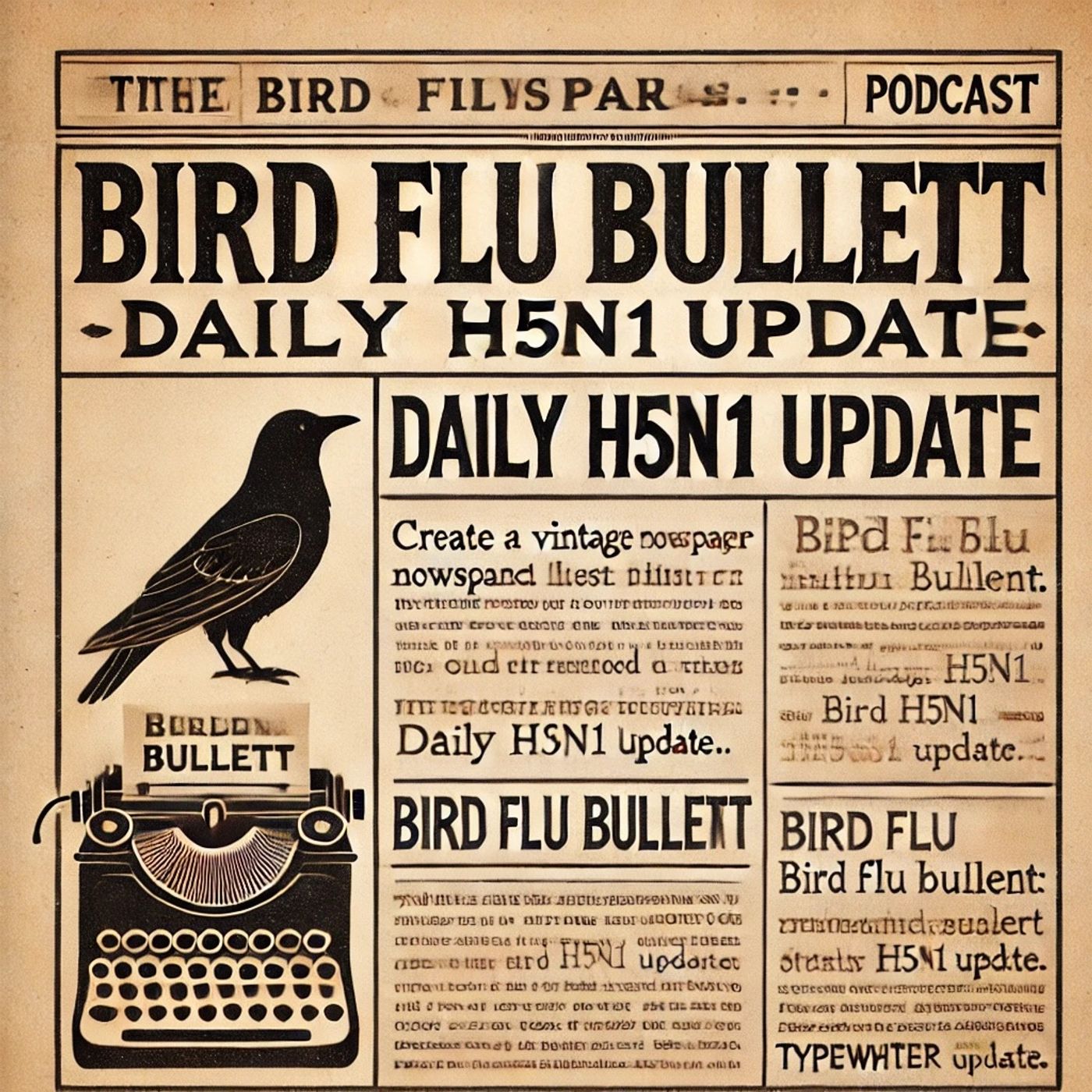Podcast Episode Details
Back to Podcast Episodes
Bird Flu Spread Remains Limited: WHO and CDC Report Low Human Risk and Steady Global Surveillance
Bird Flu Bulletin: Daily H5N1 Update
Today is Saturday, August 23, 2025. This is Bird Flu Bulletin: Daily H5N1 Update, your concise source for avian influenza news.
Top stories:
First, the World Health Organization and CDC confirm there were no new human cases of H5N1 globally in the past 24 hours. The latest published tally remains at 26 human infections from January 1 to August 4, with 8 deaths reported in Cambodia this year. All cases to date continue to involve direct contact with infected poultry or wild birds, with no evidence of human-to-human transmission according to the CDC and WHO.
Second, the highly pathogenic H5N1 strain continues to impact animal health. The joint FAO/WHO/WOAH public health assessment notes more than 1,000 U.S. dairy herds confirmed infected since the start of 2024, but only minor new animal outbreaks this week. Surveillance in Asia has detected additional wild bird deaths in China and Cambodia, but no expansion of the outbreak’s geographic footprint. The virus remains present in diverse animal populations, but not spreading rapidly among people.
Third, new guidance arrived overnight for farm and healthcare workers. The American Medical Association (AMA) and CDC reaffirm that the risk to the general public remains low. However, enhanced personal protective equipment (PPE) is recommended for anyone with direct exposure to sick birds or infected mammals. Accelerated subtyping for all hospitalized influenza cases is now advised, allowing faster identification of potential H5N1 cases.
Case numbers:
Compared to yesterday, there has been no change in global human infections. The U.S. has not reported any new human cases since mid-February, and worldwide numbers are unchanged, keeping cumulative infections at 26 for this year so far. Animal cases remain steady, with no major jumps in herd or flock outbreaks.
Health authority statements:
CDC Director Dr. Mandy Cohen reiterated today, “The current evidence indicates that H5N1 is not efficiently spreading between people. Our risk assessment is unchanged, but continued vigilance is essential—especially for those working directly with poultry, dairy cattle, and wild birds.” The World Health Organization echoes this position and stresses ongoing international cooperation for surveillance.
Expert interview snippet:
We spoke with Dr. Rajiv Sen, a virologist at the Global Influenza Programme, asking about future risks. Dr. Sen explained, “The primary concern remains the potential for the virus to evolve. Right now, transmission is from birds or mammals to humans with limited severity. But rapid genetic changes in influenza viruses are possible. Monitoring for mutations and faster case detection are our best defenses.”
Looking ahead:
Tomorrow, expect further updates on field surveillance from affected regions, including new environmental sampling reports from a coalition of U.S. and Asian agencies. The CDC has scheduled a technical briefing for local health officials to strengthen rapid response protocols. International groups forecast heightened awareness campaigns as autumn migratory birds begin to move, potentially affecting virus circulation in the Northern Hemisphere.
Thank you for tuning in to the Bird Flu Bulletin: Daily H5N1 Update. We’ll be back next week with breaking developments and expert insights. This has been a Quiet Please production. For more, check out Quiet Please Dot A I.
For more http://www.quietplease.ai
Get the best deals https://amzn.to/3ODvOta
Published on 17 hours ago